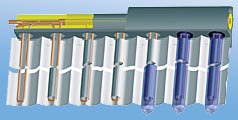
Energía Solar
Energía Solar
Solar panels vacuum tubes
for hot water
Ritter Solar
CC
Quito, Ecuador, Sudamérica

>>>
vacuum generated in the intermediate space - the thermos. Based on the thermos principle, Emmet developed vacuum tubes in 1909 to harness solar energy. His patents from this time still form the basis for the latest vacuum tube technology today. The effectiveness of this ancient technology of the thermos has been able to be brought to the highest level thanks to the help of modern coating technologies and highly selective layers.
Technology today
The Ritter Solar Evacuated Tube Collector consists of 3 fully pre-assembled main components:
A) Vacuum tubes,
B) CPC reflectors and
C) collector box with heat transfer unit
How CPC OEM Vacuum Tubes Work
Structure and operation of collectors
Historical roots - the invention of the thermos
The Scottish physicist James Dewar invented in 1893 a double-walled container with a
Colector de tubos de vacío CPC 12 INOX
Vacuum tube collector CPC 6 INOX
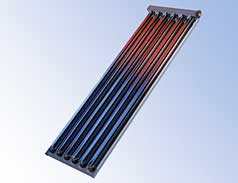
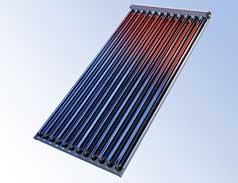
Vacuum tube
The vacuum tube is an excellent product in terms of power and geometry. The tubes are structured in two concentric glass tubes that on one side are closed in the shape of a half sphere and on the other side they merge with each other. The interspace between the tubes is evacuated and finally sealed (vacuum insulation).
In order to harness solar energy, the outer surface of the inner glass tube is covered with a highly selective and non-polluting layer, thus conceived as an absorber. This coating is therefore protected in the intermediate void space. It is a sprayed layer of aluminum nitrite that is characterized by its very low emission and excellent absorption capacity.
The CPC reflector
To increase the effectiveness of the evacuated tubes, behind them is a weatherproof and highly reflective CPC (Compound Parabolic Concentrator) reflector. Its special reflector geometry ensures that direct and diffuse sunlight hits the absorber, even at unfavorable beam angles. This significantly improves the energy efficiency of a solar collector.
Unfavorable irradiation angles occur when the light falls obliquely (azimuth angle) (without orienting the placement surface to the south, sun path from east to west and diffuse irradiation).
Collector box and heat transfer unit
The collection and distribution vacuum tubes are located in the collecting box.
The supply or return connection can be made both on the left and on the right.
In each vacuum tube is a direct flow U-tube, attached to the collection or distribution tube in such a way that each vacuum tube has the same hydraulic resistance. This U-tube is pressed against the inside of the vacuum tubes with the heat deflector plate.
How vacuum tubes work
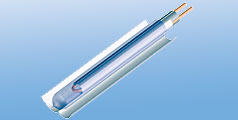
Vacuum tube collector CPC 6 INOX

Reflector CPC Compound Parabolic Concentrator
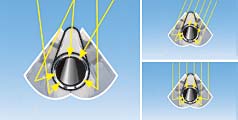
Collector box and heat transfer unit
